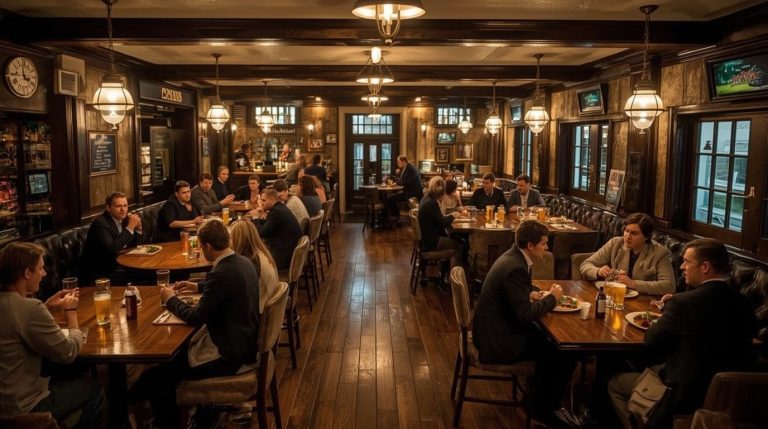As a good omen of UK retail strength, Tesco PLC (TSCO.L) stocks have been on the rise against a backdrop of optimistic predictions on festive business, which only highlights the success of the supermarket big box in a competitive grocery market.
By November 29, 2502, the stock had risen 2.8 to 342.6p, which is moving its value in the market over PS23 billion and helped the FTSE 100 to move slightly upwards. This movement is an indication of investor confidence in the ability of Tesco to ride the consumer spending pattern despite the economic uncertainties that have remained.
As the biggest and most successful retailer in Britain, Tesco has more than 4,000 outlets and supports strong online sales despite withstanding the recent challenges such as the disruption of its supply chain and inflation rates.
The most recent burst is due to analyst upgrades on the company after it hinted at good early holiday sales figures on the basis of value propositions and premium lines of products that attract a wide spectrum of customers. As the Christmas season is going on, the performance at Tesco would dictate the year-end performance of the sector.
Expectations Drivers Earnings Festive Momentum
Profiteers forecast that Tesco would make PS2.9 billion in profit in the forthcoming fiscal year 2026, which is a growth of 7% over the previous year, following like-for-like sales growth of 4.2% during the third quarter.
It is expected to have a revenue of over PS70 billion, supported by the Clubcard loyalty programs and financial technology projects like Tesco Bank. Being a fully operational supply chain with AI-optimised supply chains and sustainable sourcing was mentioned by the CEO, Ken Murph, as being essential to keeping the margins low in the face of a wage increase and energy expenses.
This hope is in contrast to previous drops in 2025, as in August, shares dropped to 310p due to fears of price wars with discounters such as Aldi and Lidl. Tesco stock has gained 18% to date, beating the 7% increase of the FTSE 100 and is an indication of a recovery after the pandemic volatility. Total returns inclusive of dividends over five years are 45, and this has paid off to the patient investors who gamble on the flexibility of the retailer.
The international presence, especially in Central Europe and Asia, gives it diversification, but 90% of the profits are earned in the UK. Wholesaling has also been added through recent acquisitions to expand the market share, which now sits at 28% in groceries.
Dividend Reliability Amid Market Pressures
One of the strengths of Tesco is its stable returns to shareholders. The retailer has a forward dividend yield of 3.8% and the payouts are expected to be 13p per share in 2025, compared to 12p per share last year. This is a progressive policy, which was restored after the reduction of the debt, attracting income-oriented funds. It has strong balance sheet health with net debt of PS10 billion and a debt-to-EBITDA ratio of 2.1, as it has room to invest.
However, risks abound. Analysts are cautious of the possibility of a margin shrinkage in case food inflation returns or consumer spending declines because of the increased taxes being proposed in the Autumn Budget. Price-matching strategies have come to the rescue of Tesco, but long-range competition may put pressure on profitability. There is also regulatory scrutiny of environmental practice and labour standards, which is a watch point.
Broker Notes and Industry Comparisons
Most analysts are of the opinion that it is a Buy with a target price of between 360p and 400p. Shore Capital attributed the defensive characteristics of Tesco in troubled times, and Jefferies observed the upside in the growth of e-commerce, which now comprises 15 per cent of sales. The scale of Tesco in negotiations with suppliers, and also the innovation of product lines, has an advantage over other rivals such as Sainsbury and Morrisons.
On a wider basis, the UK retail stocks are inflated by the declining interest rates and the increasing wages exceeding the rising inflation rate. FTSE 100 gained by 0.5 per cent on November 29, as the consumer staples trailed, against a background of low-volume trading after the holiday. The economy of the US and commodity prices are among the global forces that affect food prices, and this may affect the future of Tesco.
Towards the end of 2025, the focus will change to fourth-quarter updates by January 2026. The management targets 3-5% growth in sales and will focus on high-quality festival offerings and sustainability targets, such as net-zero by 2035.
The Future of Investors in 2026
To the investors, Tesco is a combination of both stability and expansion in a cyclical industry. Value seekers can consider the existing levels as a point of entry, particularly where returns on dividends are compounded. Portfolios focused on growth, like the digital pivot, such as app additions and personalised shopping data analytics.
However, macroeconomic headwinds may dampen growth, e.g. existing recessions or barriers to trade. Tesco has a track record of manoeuvring through a crisis, whether it is Brexit or Covid, but it is vital to keep a watch on consumer attitudes. This stock price increase has underscored the central position of the supermarket in UK households, which could mark a successful new year for the interested parties.












 Bitcoin
Bitcoin  Ethereum
Ethereum  Tether
Tether  XRP
XRP  USDC
USDC  TRON
TRON  Lido Staked Ether
Lido Staked Ether  Cardano
Cardano  Avalanche
Avalanche  Toncoin
Toncoin  Wrapped SOL
Wrapped SOL